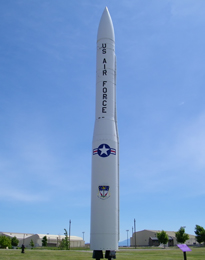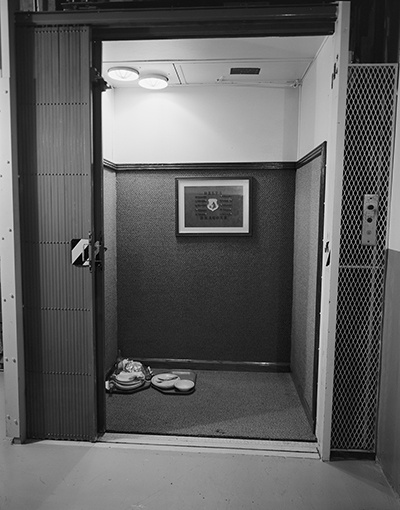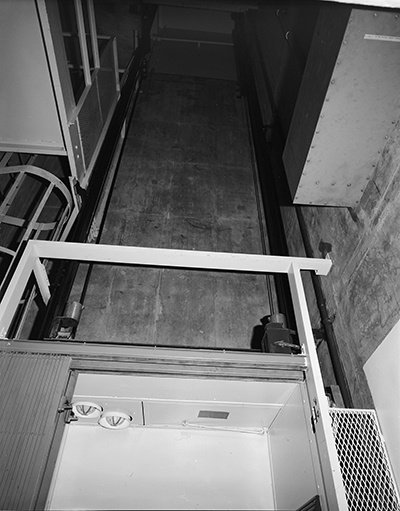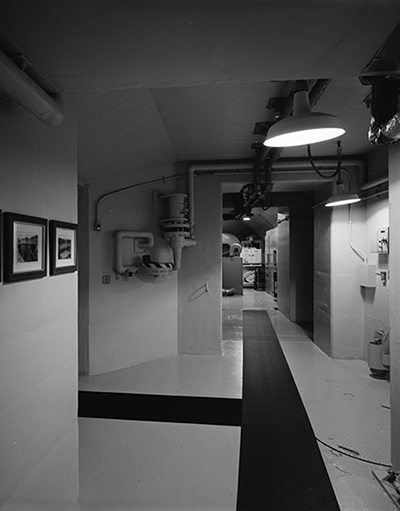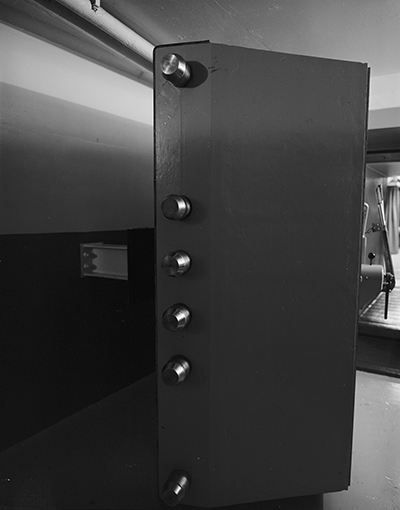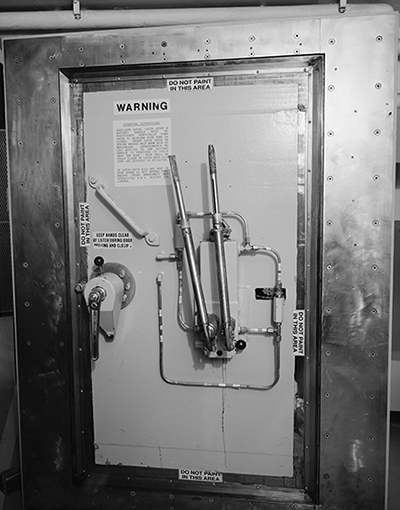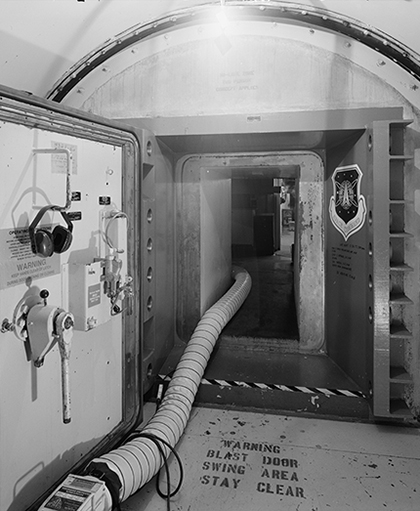Launch Control Center Interior
The two launch control officers access the underground Launch Control Center via the elevator. Initially the two officers gain access into the Launch Control Facility, at which point both officers are allowed access to the elevator just off of the Security Office, which is at ground level in the LCF.
The second image on the right, above, provides the perspective of what the two officers see once the elevator opens below ground, just outside the Launch Control Center (Capsule) itself.
Once the elevator completes its descent, the launch control officers exit the elevator into the vestibule just outside of the Launch Control Center. With Missile Wings III, IV, V and VI, as well as the 564th Missile Squadron (20th Squadron) that was attached to Malmstrom AFB (Wing I), the two officers also have access to the Launch Control Equipment Room, which houses a diesel powered electrical generator which supplies emergency power, as well as additional equipment that provides environmental control of the LCC.
The image on the left, directly above, gives the viewer the perspective of the corridor just outside of the Launch Control Center, looking into the Launch Control Equipment Room. The corridor pictured belonged to the Grand Forks AFB. At Wing I, Malmstrom AFB and Wing II, Ellsworth AFB, the Launch Control Center was the only structure found underground. The emergency generator and environmental control equipment at Wing I and II were at ground level, inside the Launch Control Facility.
The image above, on the right, shows a blast door belonging to a Launch Control Center with the Ellsworth AFB in South Dakota. Note the lugs of the blast door are extended. This gives the viewer an idea of the extent of what the Air Force went through in assuring that the combat crew inside the Launch Control Center were as secure from an enemy attack (nuclear in nature) as possible.
The image on the left, directly above, provides the perspective of the what the LCC blast door looks like, once the door has been closed, which is always from the inside. Whenever the two new combat crew officers were coming to replace the two officers that are just completing their shift, the replacement combat crew must give the correct code to the two officers inside, before they open the blast door. If the new crew members were to provide an incorrect code, the officers inside will not open the blast door.
The Launch Control Center mandates that this is a "NO LONE ZONE", where both officers are together at all times. One individual is never allowed in the LCC unless he or she is accompanied by their fellow launch officer. They never can be left alone by them self.
The photograph on the right provides the view of the blast door open, looking from the inside of the LCC out. Note the large holes in the frame of the door, four in the middle, one on the top and bottom, on both sides of the frame of the blast door. Again, these facilities were built "hardened" in the event of a nuclear blast. It was/is imperative that the combat crew inside are provided every opportunity to carry out their task, in the event of a nuclear war.
Follow the link below for the final page discussing the interior of the Launch Control Center and the various pieces of equipment and how they function, providing the necessity of monitoring, overseeing and if called upon to do so, launching the 10 Minuteman missiles assigned to that Launch Control Center.
